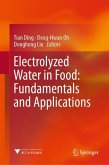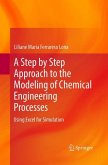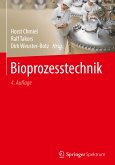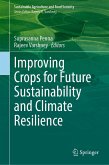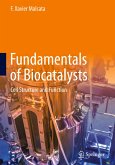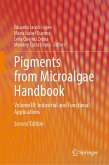This textbook covers essentials of in situ and auxiliary operations necessary to operate a bioreactor where living cells are utilized as biocatalysts. Special focus is given to critical steps in preparing and managing the culture medium as support for processing, such as medium formulation, inoculum preparation, buffering, foaming, and sterilization.
A pragmatic and systematic approach is provided to all such topics, from the point of view of a biological engineer illustrated by selected and carefully solved problems, proposed at the end of each section. Mathematical derivations are put forward that are easy to follow step-by-step even by students holding only elementary mathematical and biochemical backgrounds; and are developed at a pace suitable for self-learning. Furthermore, the functional forms and meanings of the expressions produced are explored, and the final germane formulae are duly highlighted and graphically interpreted in dimensionless form to facilitate perception of major trends and asymptotic behaviours. Therefore, this textbook offers a valuable resource for both instructors and undergraduate/graduate students as an aid to understand and relate basic physicochemical concepts underlying the actual operation of bioreactors, rather than conveying mere descriptions and empirical correlations.
This textbook and the companion volumes Fundamentals of Biocatalysts: Cell Structure and Function , Operation Fundamentals in Bioreactor Engineering Fluid Dynamics , and Modelling Fundamentals in Bioreactor Engineering fill the gap between qualitative approaches focused on biochemistry, on the one hand; and technological approaches resorting to correlations that hardly convey a fundamental understanding of first principles, on the other.
A pragmatic and systematic approach is provided to all such topics, from the point of view of a biological engineer illustrated by selected and carefully solved problems, proposed at the end of each section. Mathematical derivations are put forward that are easy to follow step-by-step even by students holding only elementary mathematical and biochemical backgrounds; and are developed at a pace suitable for self-learning. Furthermore, the functional forms and meanings of the expressions produced are explored, and the final germane formulae are duly highlighted and graphically interpreted in dimensionless form to facilitate perception of major trends and asymptotic behaviours. Therefore, this textbook offers a valuable resource for both instructors and undergraduate/graduate students as an aid to understand and relate basic physicochemical concepts underlying the actual operation of bioreactors, rather than conveying mere descriptions and empirical correlations.
This textbook and the companion volumes Fundamentals of Biocatalysts: Cell Structure and Function , Operation Fundamentals in Bioreactor Engineering Fluid Dynamics , and Modelling Fundamentals in Bioreactor Engineering fill the gap between qualitative approaches focused on biochemistry, on the one hand; and technological approaches resorting to correlations that hardly convey a fundamental understanding of first principles, on the other.


